-
Slowing time as a way to counter cyberattacks
Researchers offer a new way to deal with cyberattacks on critical infrastructure like power and water utilities and banking networks: slow down Internet traffic, including the malicious code, when an attack is suspected; this would allow networks time to deal with the attacks
-
-
Maintaining bridges and improving safety on a budget
What if there was a way to improve the safety, durability, and sustainability of aging bridges across North America without increasing spending? Researchers say they have found a way to do so
-
-
Humble bacteria help create self-healing concrete
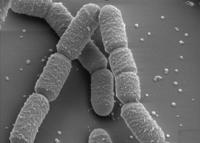
Scientists use a ground-borne bacteria — bacilli megaterium — to create calcite, a crystalline form of natural calcium carbonate; this can then be used to block the concrete’s pores, keeping out water and other damaging substances to prolong the life of the concrete
-
-
Biofuel tree offers abundant energy
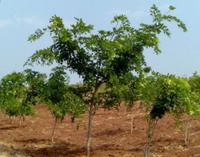
The Pongamia trees require minimal nitrogen fertilizer, grow fast, show a strong tolerance to drought and salinity, plus they will not compete with prime agricultural land; Aussie researchers plan to plant 3,000 hectares of Pongamia trees in north Queensland, which will yield an estimated ten to fifteen million liters of biofuel
-
-
Clean drinking water for everyone, everywhere
Nearly 80 percent of disease in developing countries is linked to bad water and sanitation; now scientists have developed a simple, cheap way to make water safe to drink, even if it is muddy
-
-
Sensing technology helps prevent construction accidents
Researchers have developed a system that employs remote sensing technology to improve safety on construction sites by using tracking tags to monitor movements in real-time
-
-
Rapid test strips detect swimming water contamination
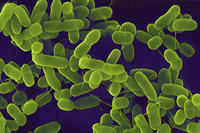
Water-testing technology has never been fast enough to keep up with changing conditions, nor accessible enough to check all waters; researchers have developed a rapid testing method using a simple paper strip that can detect E. coli in water within minutes; the new tool can close the gap between outbreak and detection, improving public safety
-
-
Waste-to-energy technology deployed in California
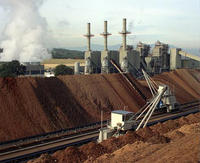
A new Anaerobic biodigester waste processor, which relies on bacteria to break down biodegradable waste material in the absence of oxygen, is deployed by a Sacramento, California company; it converts 7.5 tons per day of food waste from regional food producers, including Campbell’s Soup Company, and a half ton each day of unrecyclable corrugated material into natural gas; the system will generate roughly 1,300 kWh of renewable energy per day, meeting about 37 percent of the company’s electricity needs and preventing an estimated 2,900 tons of waste from entering landfills each year
-
-
Cyberattack disrupts Iran’s oil production system
The Iranian oil industrywas subject to cyber attack this past weekend,but the Iranian government saysit has contained and controlled the damage from the malware; this is the fourth known cyber attack on Iran’s civilian and military infrastructure
-
-
Safe fracking requires distance from sensitive rock strata
Fracking — the process which releases natural gas and oil from shale rock strata – is becoming more and more popular because it promises access to new, abundant sources of energy; the process of fracking, however, has been associated with increase in the frequency of earthquakes and contamination of drinking water; scientists examine thousands of fracking operations in the United States, Europe, and Africa, and conclude that in order to minimize water contamination and earthquakes, there should be a minimum distance of at least 0.6 km between a fracking operation and sensitive rock strata
-
-
New Iowa bridge equipped with damage-detection gauges
A new Iowa bridge is equipped with sensors which provide a large amount of quantitative information about the bridge’s performance and condition; these gauges take 100 readings a second for corrosion, strain, surface conditions, moisture within the steel arch, and structure movements over time; the bridge is also equipped to monitor the security of the structure and to record surveillance video; it is a structure monitoring model that could be used for other new bridges, including much larger ones
-
-
Identifying the sources of global sea level rise
As the Earth’s climate warms, a melting ice sheet produces a distinct and highly non-uniform pattern of sea-level change, with sea level falling close to the melting ice sheet and rising progressively farther away. The pattern for each ice sheet is unique and is known as its sea level fingerprint; now, geophysicists have found a way to identify the sea level fingerprint left by a particular ice sheet
-
-
New, vast source for electricity: rivers flowing into the sea
A new type of electric power-generating stations could supply electricity for more than a half billion people by tapping just one-tenth of the global potential of a little-known energy source that exists where rivers flow into the ocean
-
-
Increased U.S earthquakes may be caused by fracking
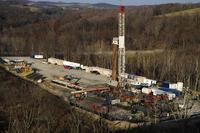
From 1970 to 2000 the number of magnitude 3.0 or greater temblors in the U.S. mid-continent averaged twenty-one annually; by 2011 the number of such quakes had increased to 134; a new study by the U.S. Geological Survey links the increase of seismic activity to the increase in the use of hydraulic fracturing, or fracking
-
-
U.S. aging bridges in critical condition
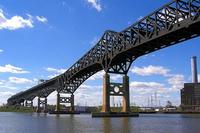
There are an estimated 18,000 bridges in the United States that are classed as fracture-critical bridges, requiring continual inspections; the need for increased inspection and maintenance runs against shrinking state and federal budgets for infrastructure improvements; bridges must also be closed for maintenance – but at least for that there is now a solution: instant bridges
-
More headlines
The long view
Helping Strengthen America’s Critical Infrastructure
Everyday life depends on a robust infrastructure network that provides access to running water, communications technology and electricity, among other basic necessities. The experts who keep our national infrastructure secure and resilient also need a strong network to share their knowledge and train the next generation of professionals capable of solving complex infrastructure challenges.
AI and the Future of the U.S. Electric Grid
Despite its age, the U.S. electric grid remains one of the great workhorses of modern life. Whether it can maintain that performance over the next few years may determine how well the U.S. competes in an AI-driven world.
Using Liquid Air for Grid-Scale Energy Storage
New research finds liquid air energy storage could be the lowest-cost option for ensuring a continuous power supply on a future grid dominated by carbon-free but intermittent sources of electricity.
Enhanced Geothermal Systems: A Promising Source of Round-the-Clock Energy
With its capacity to provide 24/7 power, many are warming up to the prospect of geothermal energy. Scientists are currently working to advance human-made reservoirs in Earth’s deep subsurface to stimulate the activity that exists within natural geothermal systems.
Experts Discuss Geothermal Potential
Geothermal energy harnesses the heat from within Earth—the term comes from the Greek words geo (earth) and therme (heat). It is an energy source that has the potential to power all our energy needs for billions of years.
